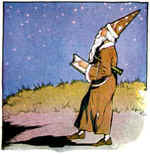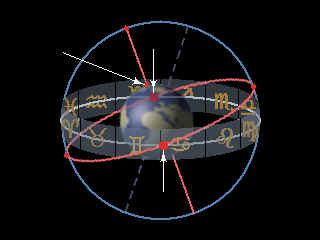Difference between western Astrology and Vedic Astrology
Western Astrology and Vedic Astrology the difference:
Page Title: sayana and nirayana Western Astrology and and Vedic Astrology the difference
There are many ways to say sensible and interesting things about another person using numerology, tarot, palmistry, Western astrology and of course Vedic astrology. It's obvious how various methods give us different information because they regard subjects from different angles. So it is with Vedic astrology. (1. View the Resources or 2. Get your FREE Vedic Astrology Reading)
Although it is very tempting to compare your Indian horoscope with your Western horoscope and perhaps even to try to see which one of the two compares the best, this is exactly what you should NOT do. Here you have two different methods that may work well side by side however each must be interpreted and approached in different manners.
| That is the joy of the two systems of astrology. Just like Western Medicine and Aurvedic (Herbal) Medicine, two different systems of treatments for the same sickness or symptoms. The Hindu system of astrology (Visit the Home Page) uses the concept of fixed Zodiac. The western system uses the concept of moveable Zodizc. |  |
The "ayanamsa" is the distance or the difference at present moment of time between the fixed and movable Zodiac. The Hindu system of astrology is known as Nirayana System because:
The earth revolves around the Sun once in 365 days 5 hours 48 minutes and 46 seconds. Considered from the earth, the Sun appears to complete one round of the ecliptic during this period. This is called a tropical year .In the span of a tropical year, the earth regains its original angular position with the Sun. It is also called the year of seasons since on this Earth-Sun cycle depends the occurrence, and timing, of seasons. If we consider the revolution of the Sun around the earth from one vernal equinox (around 21st March, when the day and night all over the globe are equal) to the next vernal equinox, it takes one tropical year to do so.
However, if at the end of a tropical year from one vernal equinox to the next, we consider the position of the earth with reference to a fixed star of the zodiac (The Ayanamsha is based on the position of the constant star Spica), the earth appears to lie some 50.26 seconds of celestial longitude to the west of its original position. In order for the earth to attain the same position with respect to a fixed star after one revolution, it takes a time span of 365 days 6 hours 9 minutes and some 9.5 seconds. This duration of time is called a sidereal year .The sidereal year is just over 20 minutes longer than the tropical year; this time difference is equivalent to 50.26 seconds of celestial longitude.

Each year, the Vernal equinox will fall short by 50.26 seconds along the zodiac reckoned along the fixed stars. This continuous receding of the Vernal equinox along the zodiac is called as the precession of equinoxes
This in other words, means that the plane of the equator intersects the plane of the ecliptic at a constantly shifting point. This point, the first point of Aries or the vernal equinox, goes on receding westward at a rate of approximately 50.26 seconds of arc each year. This is called the precession of the equinoxes. The result of this precession is a slow increase in the right ascensions of almost all fixed stars in the zodiac. This precession takes some 25,800 (or approximately 26,000) years to complete one circle. As will be seen, an appreciation of this precession is of paramount importance in the understanding of the basic concepts of Vedic astrology
 Ayanamsha:
Ayanamsha:
(The sayana and the niryana system)
It has been seen that because of the precession of equinoxes at a rate of 50.26 seconds per year, the distance between the Vernal equinox (the 1st point of the movable zodiac) and the 1st point of Mesha (Aries) on the fixed zodiac has been progressively increasing. This distance at any given epoch is called as the Ayanamsha .The ayanamsha thus indicates the difference between the fixed zodiac and the movable zodiac. The system that considers the fixed zodiac is called the Niryana (without ayana!) system, while the one that considers the movable zodiac is called the Sayana (with ayana!) system. The Niryana values of planetary longitudes can be obtained by subtracting the ayanamsha for a given time from the Sayana longitudes.
The Niryana and the Sayana zodiacs coincided in the year 285 AD when the ayanamsha was zero. At the rate of precession of equinoxes stated above, the ayanamsha on the 1st of January, 1995 is 23°47'26". The equinoctial precession completes one round in aproximately 26,000 years, as mentioned earlier, so that the fixed and movable zodiacs coincide regularly after this time span. The ayanamsha reckoned on the basis of considering the year 285 AD as the year when the Sayana and the Niryana zodiacs coincided.

The Sidereal and Tropical Zodiac
The Ayanamsha is based on the position of the constant star Spica. Intermediary data can be calculated by interpolation. Some Western computer programmes offer the possibility to make a calculation based on the sidereal zodiac. However, sometimes the ayamamsha for the sidereal zodiac used in such programs is slightly different than the Lahiri Ayanamsha. So, it is valuable to calculate the planetary positions by hand.
Table 1:
LAHIRI AYANAMSHA
1 January 1920 22°45´
1 January 1930 22°53´
1 January 1940 23°01´
1 January 1950 23°10´
1 January 1960 23°18´
1 January 1970 23°26´
1 January 1980 23°35´
1 January 1990 23°43´
1 January 2000 23°51´
How do you start? First you take the positions from the Western horoscope and deduct the relevant Ayanamsha. For example: a person born in 1950 has the Sun on 25° Pisces. The Ayanamsha for 1950 is 23°10´. Deduct this from the position of the Sun: 25° - 23°10´ = 1°50´. Therefore, the Sun in the Vedic horoscope will be on 1°50´ Pisces.
Now let us make it a little bit more difficult. Another person born in 1950 has the Sun on 15° Pisces in the Western horoscope. The Ayanamsha for 1950 is 23°10´. Deduct this from the position of the Sun (23°10´ - 15° = 8°10´ then 30° - 8°10´ = 21°50´). The Sun is now 21°50´ Aquarius. Continue calculating in this manner with the remaining planets and the ascendant.
THE NEW HOROSCOPE
Now you are in for some surprises! It appears that someone, who thought their Sun sign was Pisces, now appears to have an Aquarian Sun! This can be a real shock. What is important is the complete image that has appeared. Most probably in the new horoscope the Piscean-energy will be visible in another manner (for example, perhaps the Moon will now appear in Pisces, or the ascendant will move to Pisces in the Vedic horoscope)
.
In addition, you must remember that you are naturally accustomed to Western Sun sign and Western horoscope, so the Eastern one will initially feel strange. Learning to be flexible and open to different approaches, which may give different results, is difficult at first. The secret is to open your mind to the possibilities within a new method

10:42 PM
|
Labels:
articles,
astrological software,
parasariya raj yog,
raj yoga in kundli
|
This entry was posted on 10:42 PM
and is filed under
articles
,
astrological software
,
parasariya raj yog
,
raj yoga in kundli
.
You can follow any responses to this entry through
the RSS 2.0 feed.
You can leave a response,
or trackback from your own site.


0 comments:
Post a Comment